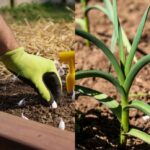There are a lot of plants available in the market for different purposes. Most of them are of two types. one is used for fruit purposes. And the other ones are available for ornamental purposes. Most of the time the ornamental plants are very expensive (monstera plant is one of them) and difficult to take care of.
You need to be very careful while selecting a particular ornamental plant for your garden or for your home garden. Some of these plants are very affordable, and their propagation and care are literally cost-effective. If you want one of them then you need to learn how to propagate the Swiss cheese plant.

Swiss Cheese Plant
The Swiss cheese plant is a creeping plant. It is a trendy and common household plant. This plant is native to the tropics of North America and South America. The woody plant can grow up to 70 feet tall. But as this plant is mostly planted in homes, it is managed at a moderate height.
To propagate the Swiss cheese plant is not difficult. It is recommended for both newbies and experienced gardeners. It is really easy to grow, propagate, and take care of. Also, it is one of the best additions to the room or your garden. Many people prefer it for its leaves shape and holes in the leaves.
Characteristics of Swiss Cheese Plants
First of all, this plant is liked and adopted because of its heart-shaped leaves and holes in the leaves as the plant ages. It grows fast as it is a vining plant. But it can be managed easily when grown in a pot or a container. It is also known as five holes plant and the Swiss cheese vine.
Because of its shape and whole ambiance, it gives a jungle look to the garden or the room where it is being planted. These plants are also good air purifiers. Which is an additional health benefit. These plants are native to the USA and can be grown well in the US Hardiness zone from 10 to 12.
These plants have white-colored flowers. Swiss cheese plants are toxic for pets. So be careful while getting this plant, especially in your indoor settings.
Types of Swiss Cheese Plants
Monstera plant, commonly known as the swiss cheese plant has a botanical name of Monstera Deliciosa, this plant has various types. These all types are collectivley known as Swiss cheese plants. These are as follows:
Monstera Deliciosa
This type of Swiss cheese plant has greater leaves than the Monstera Adansonii. The common botanical name for all Swiss cheese plants is monstera deliciosa.
Monstera Borsigiana
This type of Swiss cheese plant is smaller than the monstera deliciosa, but this is fast growing. You would need to manage it accordingly.
Monstera Obliqua
This type of Swiss cheese plant is quite rare. Its leaves are thinner than the other types of Swiss cheese plants. But this plant looks similar to the Monstera Adansonii.
Monstera adansonii
This is another type of Monstera Deliciosa. These both are almost the same in terms of characteristics and features.
Planting the Swiss Cheese Plants
Swiss cheese plants are easy to plant. You can grow these plants from seeds also. The seeds are easily available, and you have to follow some common steps. Once these seeds have germinated, then you can transplant the plants and you are good to go.
Apart from seeds, these plants can be grown from saplings too. The saplings of Swiss cheese are also easily available on horticultural sites. You just need to get them and plant them according to instructions. Once they have held the roots, you are good to go.
Besides seeds and saplings, one of the cost-effective and easy methods of growing Swiss cheese plants is the propagation of plants through stem cuttings. Yes, these plants can be grown through this method of propagation. And you will be amazed that these plants do better this way as same as grown from the seeds or saplings.
Swiss Cheese Plant Propagation
As you are going to propagate the Swiss cheese pants you will need tools. Make sure these are sharp so that there is no problem with cuttings. You will need pruning shears. With pruning shears, you will cut the stems, leaves, and roots.
You will also need isopropyl alcohol or simply alcohol to sterilize the equipment before and after cuttings the stems and leaves. It will help in avoiding inserting any harmful bacteria into the cuttings. Also, make sure you have got the right potting mix for the cuttings.
If you are going to propagate the Swiss cheese plant in the water, make sure you get clean water for this purpose.
Taking a Monstera Plant Cuttings
This step is the most important step to propagate the Swiss cheese plant. Your success and failure of propagation depend upon this step.
Get the equipment ready. Make sure these are sharp and sterilized. Choose the healthy stem to cut. Cut 0.25 inches below the node. Make sure that the node is intact. From this node, the cutting will sprout.
Cut the leaves from the bottom of the stem. Leave 3 to 4 leaves on the stem. Cut the stem at a 45-degree angle so that rooting is maximum.
Propagation of Swiss Cheese Plant in Water

In water, the propagation is easy and cost-effective. Plus, there is added advantage of seeing the development of the roots.
Now fill the glass case with clean water and place the Swiss cheese cutting inside. Placement is important. Place the cutting and glass at room temperature. Make sure there is a bright light, but it has to be indirect. Direct sunlight can damage the cuttings.
You need to be patient at this stage of propagation. Change water after every two to three weeks when it gets murky. After a couple of weeks, you will start to notice new roots. Wait for some time, until the roots get 2 to 3 inches long. Now you can transfer them to the soil.
Propagation of Monstera Plant Plant in Soil
This process is slower than the process of propagation in water. But the results are usually very good.
For soil propagation, you need to choose the soil mix which is good, and pot with a good drainage system. It should keep the soil lightly moist and drain the excess water quickly. Soil needs to be having pH between 5.5 to 7. Drainage is very important to prevent waterlogging.
Keep the pot at room temperature where there is ample bright light, but it should be indirect.
Place the cutting inside the soil. keep the soil moist during and after the propagation. You will not be able to see the roots. So, you will have to wait for the leaves to sprout out. Then you can celebrate that your cutting has yielded results and it has grounded.
Swiss Cheese Plant Care
Swiss cheese plants are vining plants. They love to climb. You just need to provide adequate water and food to grow it smoothly.
Light Requirement for Monstera Plants
It is a tropical plant that needs sunlight to grow and develop. It needs room temperature with adequate light. Bright indirect light is good for growing. More and direct exposure to light is not good. In the forests, this plant usually grows under the trees and has the shadow of other trees.
Its foliage can get burned due to extensive exposure to sunlight. If it is unavoidable, make it 2 to 3 hours a day.
How Often to Water Swiss Cheese Plant
These plants like moist soil, but not to be soaked. You should first check the soil with a finger. Check the upper layer of the soil. it should be 1 inch deep. If the soil is near to dry it is a good time to water the Swiss cheese plant. Water the monstera plant well.
This plant thrives well in warm and humid environments. You can produce this environment artificially or you can place this plant in an ideal way.
Fertilizers
This plant doesn’t need much fertilizer. However, it is good that you provide this plant with regular fertilizers after each month. It will ensure smooth growth. Use half diluted all-purpose fertilizers.
Pruning
As it is a creeping plant it needs pruning to keep the height and size manageable. Prune it in the spring season. don’t prune more than 25 percent of the plant.
Pests and Diseases
These plants can be prey to common household pests like spider mites, etc. these can be treated with non-toxic insecticides or with neem oil. Also check the plants for powdery mildew, root rot, and blight.
Why is my Swiss Cheese Plant Turning Yellow and Brown
Leaves turning brown or black is a sign of sunburn. Your plant might be facing the sunlight directly. So, adjust the placement of the plant.
Why is my swiss cheese plant turning yellow?
Yellow leaves are usually a result of over-watering the plant. So, keep eye on the watering schedule. Ensure the drainage holes are working smoothly and there is only moisture and no soaking.
Caution: As mentioned earlier this plant is toxic for pets. Be careful regarding the quality of the plant
- 40 Fall Decor Ideas for the Bathroom

- 15 Best Vegetables to Grow in Winter

- How to Grow Garlic in Fall?

- How to Protect Plants in Winter?

- 22 Plants That Survive in the Winter?

- 20 Plants That Flowers in Winter

References

